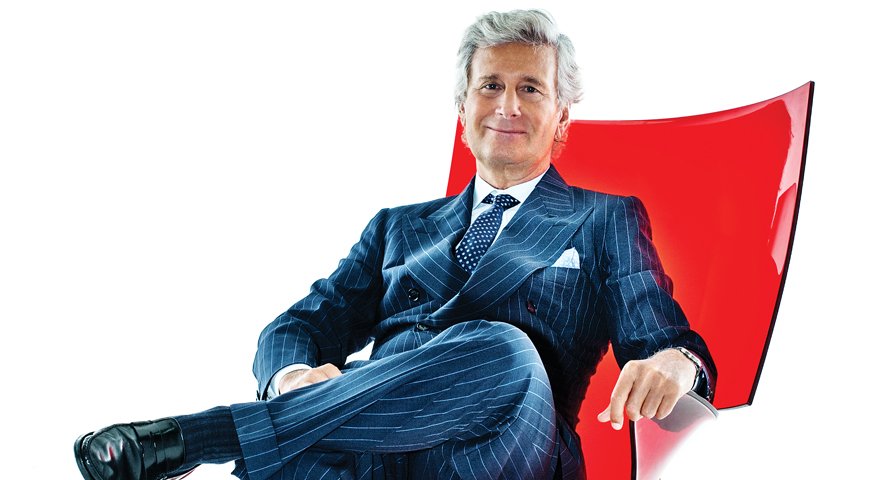Claudio Luti, 67, began his career as Gianni Versace’s right-hand man, but after a decade with the designer he left to become CEO of Kartell in 1988. Originally owned by Luti’s father-in-law, Kartell had once manufactured automobile accessories, but over the past 25 years Luti has transformed the Milan-based firm into a furniture empire with more than 130 flagship stores around the world. Additionally, in 2012, Claudio Luti became president of COSMIT, the Italian trade organization behind the world’s acclaimed trade show, Salone del Mobile. Here’s how he did it.
“I studied economics, but my first job was in fashion. Now it is more than 25 years that I am in the design field, and my approach is always to be the driver of the strategy of the company. If you don’t do the strategy, you don’t guide the innovation. If you don’t do the strategy, you don’t control the company.”

“My idea for Kartell was to invent an industrial-design company. I wanted to change the idea that an industrial product was poor, so I collaborated with the best interior designers. The first chair that I made was with Philippe Starck. It totally changed the image of plastic.”
“There are many ways to say, ‘I do something innovative.’” Innovation can be new materials, like when we made the first transparent chair using polycarbonate. Innovation can be a new machine, like when we made the first sofa to come from a single mold.”
“Business is not enough. I like the life.”
“In my office, I take care of everything. I like to have control. So my way is really to participate all the time, in everything. I don’t want to have the assistant speaking with the artists, I don’t want my engineer speaking with the designer. I like to stay at the table.”

“Kartell is a family company —I have my son and daughter working with me. I was very clear with them, though. I told them to come to the company if they liked, and I will leave them power if they are able. I don’t want to leave my company to someone who is not able to run it.”
“When design can survive on the market for 20, 30 years, it becomes an icon, and an icon can live in different places and close to different materials and next to items from different designers. That is design success.”






